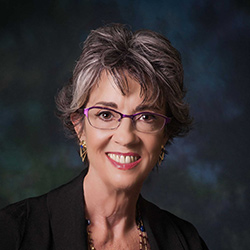How a 16-year-old climate activist can help us mobilize the global community around workforce issues.
Greta Thunberg can teach us quite a lot about mobilizing the world community to deal with the workforce crisis facing the field of aging services.
The 16-year-old climate activist “had me at hello” when she stepped off the emissions-free yacht that carried her from Sweden to New York a few weeks ago. This remarkable young woman feels deeply that we’re in the midst of a global climate crisis. And she’s pretty mad at all the adults in the room because we’ve let the situation get out of control.
“How dare you continue to look away and come here saying that you’re doing enough when the politics and solutions needed are still nowhere in sight,” she scolded during the United Nations Climate Action Summit on Sept. 23.
We could use a little bit of Thunberg’s outrage and energy as we think about our workforce crisis, which was brought on by demographics but was made so much worse by a lack of political will to elevate the value of direct care workers, transform our workplaces, welcome immigrants, and step up our game on competencies and training.
LESSONS FROM GRETA
Clearly, Thunberg’s emotional speech at the UN summit was impressive. But I was more even impressed by the 16-year-old’s ability to inspire young and old to participate in her global climate strike a few days earlier.
An estimated 4 million people walked out of their schools and workplaces on Sept. 20 to demand action on climate change and participate in 2,500 events held in 163 countries on all 7 continents.
As a Washington, DC, resident, I’ve seen my share of impressive protests on the National Mall and at the U.S. Capitol. But it’s an entirely different experience to see thousands of protesters simultaneously clogging streets, in one city after the another, in every corner of the globe.
It gave me chills—and maybe even a little hope that change may actually be possible.
That hope is Greta Thunberg’s gift to the world.
It could also be her gift to the field of long-term services and supports (LTSS).
THE WORKFORCE CONNECTION
The global nature of the Thunberg-inspired climate strike did not escape me as I headed home from the Global Ageing Network (GAN) conference in Toronto on Sept. 20. The multiday conference attracted over 800 participants from 24 nations.
During a day-long Workforce Summit, which PointClickCare sponsored in connection with the conference, LTSS providers and researchers from around the world had some of our best discussions to date about the challenges that each of our countries is experiencing around workforce.
We were reminded, once again, that we face common workforce challenges, not challenges that are restricted to just one or two countries. During the course of our day-long session, and in our private conversations, we progressed from simply cataloging those workforce challenges to actually examining good models that could help us address them worldwide.
In short, we recognized that we have a global workforce crisis: not a local crisis, not a national crisis, not even a hemispheric crisis. And, like Greta Thunberg and her followers, we recognized that our shared crisis requires shared solutions and global action.
ROLE OF THE GLOBAL AGEING NETWORK
I’m not expecting to organize a global “LTSS workforce strike” anytime soon. But I left Toronto with several strong convictions:
- We are all in this together.
- We have smart people on our global “team” who are highly engaged in devising workable solutions to the workforce crisis.
- We can learn a great deal from one another.
- We must act together to bring about changes that will strengthen our global LTSS workforce and prepare that workforce to meet the needs of a rapidly aging world.
I was particularly energized by the interest my colleagues expressed in using the Global Ageing Network as a vehicle for addressing workforce challenges, especially those related to compensation, competencies, training, and public policy.
I think that’s a great idea.
FOLLOWING GRETA’S LEAD
Whether we’re talking about climate change or the LTSS workforce, I always feel more optimistic when we take a global view of big, scary challenges.
That’s because there is strength in numbers.
If we stand together, we’ll be better able to focus the world’s attention on the evolving workforce crisis. We’ll have a much greater capacity to develop and push for solutions. And we’ll have a lot more power to make big and needed changes.
It took a 16-year-old Swedish girl to figure this out. I think it’s time we followed her lead.

Robyn I. Stone, DrPH, is senior vice president of research at LeadingAge, and co-director of the LeadingAge LTSS Center @UMass Boston. Her widely published work addresses long-term care policy and quality, chronic care for people with disabilities, the aging services workforce, affordable senior housing, and family caregiving.
